What is the difference between the grinding degree of coffee beans? Coffee utensils suitable for different degrees of grinding?

Professional coffee knowledge exchange more coffee bean information please follow the coffee workshop (Wechat official account cafe_style)
What is the difference between the grinding thickness of coffee beans? What kind of equipment is suitable for different degrees of grinding and thickness?
Qianjie this article will take you to learn how to judge the degree of grinding of coffee. No matter how we extract coffee, we have to grind it.
And different ways of making coffee, the corresponding degree of grinding will be different.

The degree of coffee grinding is a very disturbing factor. The problems of many friends in cooking are due to the inaccuracy of the grinding degree.
Why is my coffee so light? Why does my coffee have a bitter taste?! Is there something wrong with my way of cooking?
No, there's something wrong with your grindness! The grinding degree of coffee beans determines the dissolution rate of soluble flavor substances in coffee.
Of course, not all soluble substances in coffee are delicious.
For this reason, it is necessary to maximize the extraction of delicious flavor substances and avoid the precipitation of bad flavor substances.
It is very important to determine the thickness of coffee particles.

Coffee grinding degree
The grinding thickness of coffee can be roughly divided into coarse grinding, medium grinding, fine grinding and very fine grinding required for espresso.
The size of coffee particles is called particle value, the same kind of coffee beans, different particle values, its performance of the taste will also change greatly.
The larger the particles, the more difficult it is to extract the ingredients, and the lighter the coffee is, the more difficult it is to have mixed smells.
On the contrary, the finer the grinding, the easier it is to extract the ingredients and the thicker the coffee.
However, due to fine grinding, it is easy to produce bitter taste.
Therefore, it is necessary to brew coffee by hand.
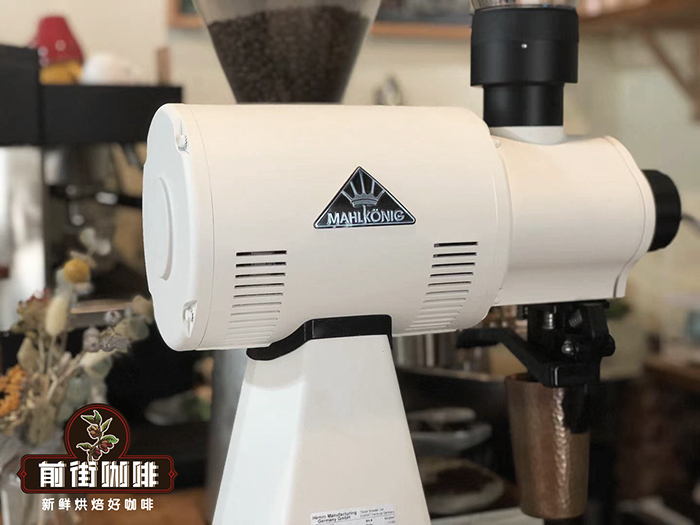
So how to judge the thickness of the degree of grinding? It is difficult for us to observe the accuracy of coffee powder thickness with the naked eye.
So we need some tools to assist in calibration. The front street is calibrated with a standard sieve No. 20 (0.85mm).

The pass rate of Qianjie coffee grindability standard sieve: ice drop > hand wind 80% > Mocha American drip 75-80% > cup test 70-75% > method pressure 65-70%.
The grindability of Qianjie coffee in brewing light roasted coffee is 20 (0.85mm). The pass rate of standard sieve is 80%, and that of medium and deep roasting is 70%.
How to determine whether the thickness of coffee powder is suitable for your own way of brewing?
Qianjie takes a cup test when it gets every new bean. The greatest purpose of cup testing is to determine the flavor and quality control of coffee beans without the interference of manipulation.
Due to the use of high-temperature soaking method for coffee extraction, so the grinding degree can not be too coarse and too fine.
In the front street, the degree of grinding used in the cup of coffee is 70-75% of the pass rate of the No. 20 screen.
Since the cup test can be calibrated by the standard screen to determine the degree of grinding.
So we can also use sieve to determine and calibrate other cooking methods (except Italian concentrated extraction).
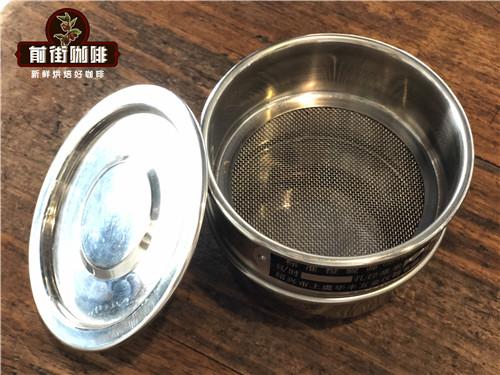
Different coffee utensils require different fineness of coffee grinding.
Different coffee utensils have different grinding degrees because of their different extraction methods.
Take the hand-brewed coffee, French presser, Italian espresso machine and cold ice drops that we most often come into contact with as examples.
The degree of grinding of the coffee from coarse to fine is listed as [French pressure pot > hand coffee > cold extraction ice drop].

Due to the different water temperature, method and time of extraction, in order to better extract coffee with the right concentration.
Therefore, it is necessary to find out the degree of grinding suitable for this extraction method.
But because the grinder does not have a fixed scale value
So there is a difference in the thickness of each grinder.
How to use coffee grinding to calibrate the screen?
The aperture of No. 20 Chinese standard sieve is 0.85mm, which is used for particle size classification and particle size testing. As long as the standard sieve meets the factory standard, it is accurate.
Coffee grinding calibration is also very simple, as long as the ground coffee powder is poured into the sieve, covered with the lid and shaken horizontally until no particles fall.
Then weigh the particles passing through the screen so that you can know the thickness of the grinding.
For example, if you grind 10g coffee powder and pass 7.5g, the grindness is 75% of the pass rate of the No. 20 screen. The higher the passing rate, the finer the degree of grinding of the coffee.

[suitable for pressing pot] the grinding thickness of coffee powder extracted is as follows:
Pass rate of No. 20 screen 68-75%
The extraction method of the pressure kettle is very similar to that of the cup test, which is mainly soaked, so the selected grinding degree coincides with the cup height measurement.
There is another reason for choosing the thicker grinding particles, that is, the normal pressure filtration uses a metal filter, the gap is visible to the naked eye, and the thicker is also chosen for better filtration.
Coffee beans with different roasting degrees will have different grinding degrees. It is recommended in front street that light roasted coffee beans (sour ones) should be moderately ground (72-75% pass rate).
Medium-and deep-roasted coffee beans (not sour) can be ground with a medium-coarse grinding (pass rate 68-71%).

The grinding thickness of coffee powder [suitable for hand extraction] is: the pass rate of No. 20 sieve is 70-80%.
The main type of hand-brewed coffee is drip filter, which is different from soaking for a long time and is easy to make a bad flavor.
The brewing time of hand coffee is short, about 1 minute 30 seconds to 2 minutes 30 seconds.
Therefore, it needs to be finer than the grinding degree measured by the cup in order to fully express the flavor of coffee.
It is recommended in Qianjie that light roasted coffee beans (sour ones) can be ground in medium and fine size (pass rate 75-80%).
Medium-to-deep roasted coffee beans (not very sour) can be moderately ground (70-75% pass rate)
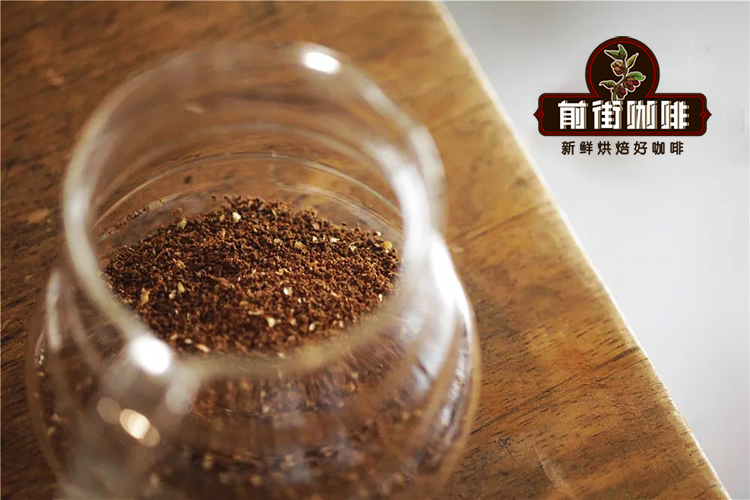
The grinding degree of coffee powder [suitable for cold extraction / ice drop] is as follows:
The pass rate of No. 20 screen is 75-80%.
Different from hand punching / pressure, cold extraction / ice droplets are extracted by low temperature immersion. The bitter substances extracted at low temperature are much less.
By prolonging the extraction time and fully infiltrating the coffee powder, it is easier to extract small molecular flavor substances, such as flower aroma, fruit aroma and so on.
However, because the two coffees need to be extracted for a long time, if too fine will make the cold-extracted coffee cloudy and prone to woody taste, the ice droplets will also have powder stratification / blockage.
Qianjie suggests that both light-roasted and medium-deep roasted coffee beans can be ground with a pass rate of 80-85% (that is, sifted with 10g coffee powder, through 8g powder).
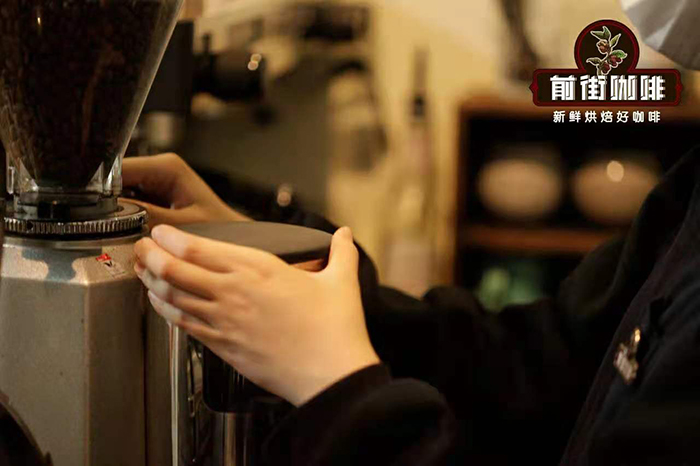
Grindability of coffee powder [suitable for espresso machine]: this can be corrected by sieve because it is too fine.
Qianjie stores debug espresso every day before opening, a large part of which is the need to adjust the degree of grinding.
As the espresso machine is very sensitive to the fineness of coffee powder, the grinding scale of 0.1 grid may be different, and the extraction time and flavor will be different.
In Qianjie, for example, the Italian extraction scheme in Qianjie is that 20g coffee powder extracts 40g coffee liquid in 28 seconds (error is ±1).
First, the extraction scheme is fixed, and the extraction scheme is achieved by adjusting the grinding degree. Then determine whether the parameters need to be fine-tuned by tasting the flavor.
For more boutique coffee beans, please add private Qianjie coffee on Wechat. WeChat account: kaixinguoguo0925
Important Notice :
前街咖啡 FrontStreet Coffee has moved to new addredd:
FrontStreet Coffee Address: 315,Donghua East Road,GuangZhou
Tel:020 38364473
- Prev
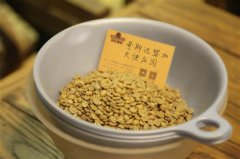
Laugh at cry! The chat between the coffee owner and the barista, learning any major can not avoid the boss.
Professional coffee knowledge exchange more coffee bean information Please follow the coffee workshop (Wechat official account cafe_style) boss: Rui, I heard that your major is e-commerce? Barista: yes, boss. Boss: well, help me buy coffee candy on Taobao. It's used up in the store. Barista: boss, please respect this major. E-commerce is. Boss: please use ja
- Next
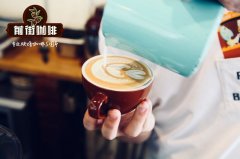
How to adjust the grinding thickness of coffee beans in different grinding machines? Coffee beans with different grinding degrees
Professional coffee knowledge exchange More coffee bean information Please pay attention to coffee workshop (Weixin Official Accounts cafe_style) How to adjust the grinding thickness of coffee beans of different bean grinders? How do coffee beans blend with different grinding degrees? Coffee beans grinding method, according to the ground particles or powder size, slightly divided into coarse grinding, grinding and fine grinding three kinds,
Related
- Detailed explanation of Jadeite planting Land in Panamanian Jadeite Manor introduction to the grading system of Jadeite competitive bidding, Red bid, Green bid and Rose Summer
- Story of Coffee planting in Brenka region of Costa Rica Stonehenge Manor anaerobic heavy honey treatment of flavor mouth
- What's on the barrel of Blue Mountain Coffee beans?
- Can American coffee also pull flowers? How to use hot American style to pull out a good-looking pattern?
- Can you make a cold extract with coffee beans? What is the right proportion for cold-extracted coffee formula?
- Indonesian PWN Gold Mandrine Coffee Origin Features Flavor How to Chong? Mandolin coffee is American.
- A brief introduction to the flavor characteristics of Brazilian yellow bourbon coffee beans
- What is the effect of different water quality on the flavor of cold-extracted coffee? What kind of water is best for brewing coffee?
- Why do you think of Rose Summer whenever you mention Panamanian coffee?
- Introduction to the characteristics of authentic blue mountain coffee bean producing areas? What is the CIB Coffee Authority in Jamaica?

